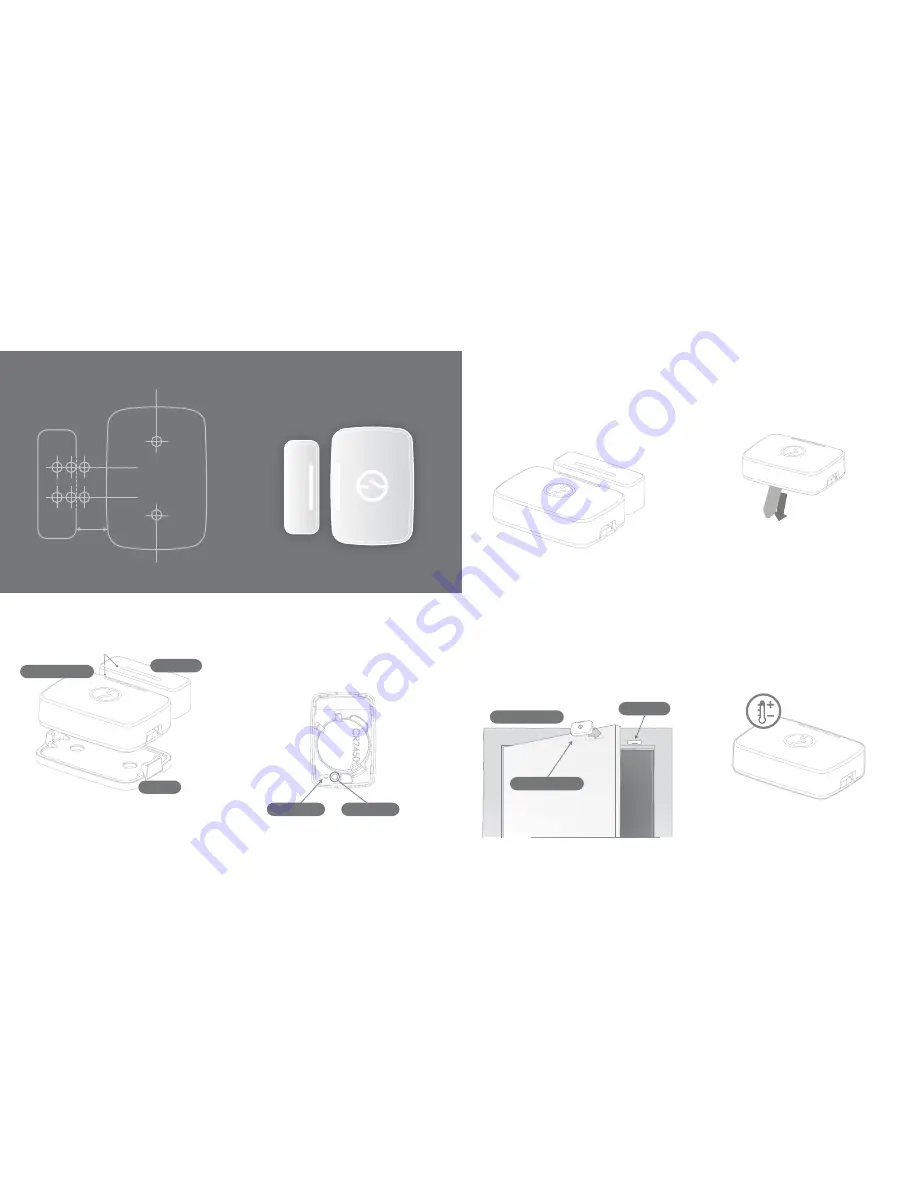
Meet your
Multipurpose Sensor
The most versatile device in the Samsung SmartThings™
family, the Multipurpose Sensor acts as an open/closed,
vibration, orientation, and temperature sensor all in one.
Multipurpose Sensor components
Multipurpose Sensor
Magnet
Magnet Alignment Mark
Wall Plate
Magnet
Wall
Plate
M
A
X 0
.4
in
10
m
m
Template for wall mounting:
Multipurpose Sensor
Installation Tips
The Multipurpose Sensor works best if it’s within 15 feet
(4.5 meters) of the SmartThings Hub when you connect it.
If your device doesn’t connect:
If your device doesn't connect when you remove the pull-tab,
hold the "Connect" button for 5 seconds and release it when
the LED light starts blinking red, then tap "Connect New
Device" under Marketplace in the SmartThings app.
Note: If you don't release the "Connect" button when the LED
light starts blinking red, the device will not be able to
complete the connection.
How to connect a Multipurpose Sensor
Select “Connect New Device” in the free SmartThings
mobile app and then remove the “Remove to Pair” tab found
in the Multipurpose Sensor.
REMOVE WHEN CONNECTING
Connect Button
LED Light
Use your Multipurpose Sensor to know if doors
are open or closed:
The SmartThings Multi Sensor can monitor whether doors,
windows, cabinets or your garage are open, closed or have
been left open after you leave home. To start, mount one
part of your Multipurpose Sensor on a doorframe, window
frame, or the fixed part of a cabinet or drawer, and place the
other part next to it on the door, window, or part that opens.
Use your Multipurpose Sensor to monitor
temperature:
The Multipurpose Sensor can detect the temperature in the
room where it's located. By placing the Multipurpose Sensor
on a door, window, or cabinet, you can monitor the
temperature and receive alerts if the room gets too hot
or cold.
Multipurpose Sensor
Door or Window
Magnet
Quick-Start
Guide


